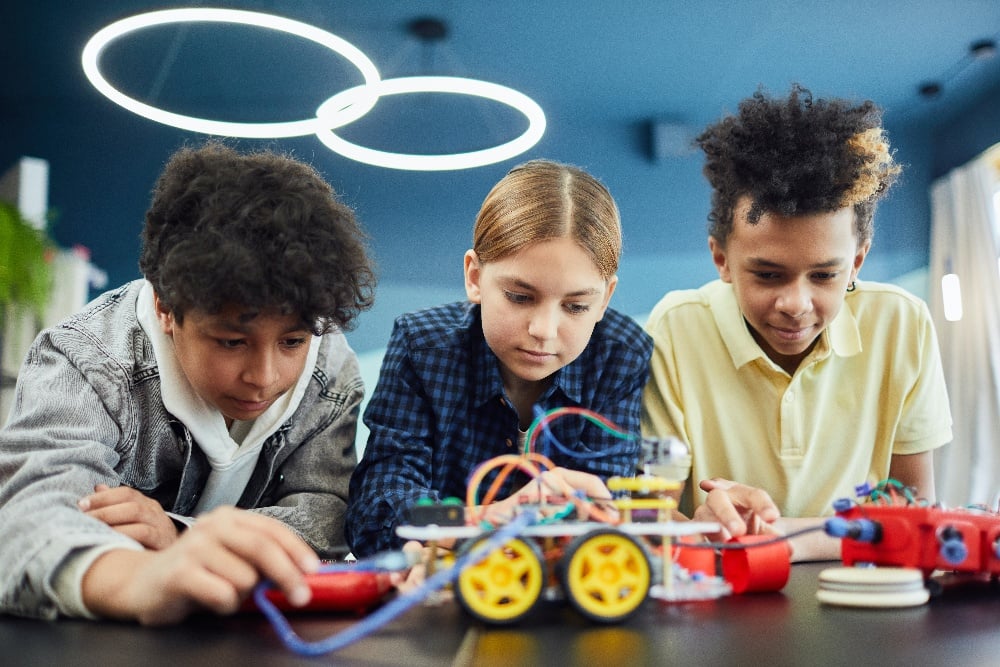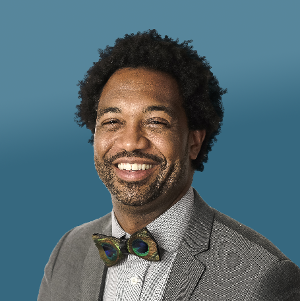I have a confession to make. I recently watched a Hallmark Christmas movie. (Yeah, I know.) But I kind of dug it. Let me explain. The show was a variation on the Dickens Christmas Carol theme - you know the one - Scrooge, the ghosts of Christmas past, present, and future, and little Tiny Tim. What was unique was that the movie had color-conscious casting, a practice that is far more inclusive than traditional casting and ensures that movies represent the consumers who view them.
The film featured a Korean actress in the lead, a Hispanic actor as her eventual husband, and a gay male couple as their best friends. Furthermore, the female lead worked as a top designer in a women-owned advertising agency and the male lead was an inner-city social worker who worked with a diverse group of kids in a community center. Of course, the movie ended happily but the thing that I was most happy about was how many people could watch that film and say, “Hey, that person looks like me.”
Color conscious casting is certainly not the cure for all of the inequities that we see on television but it seemed like a good start. It is a heck of a lot better than when I was a kid, watching the Brady Bunch. It provided a better mirror of society and a better window into the possibilities of happiness that all of us can achieve. In short, it was a decent attempt at “equity” in a traditionally one-sided, “white, upper-middle class” medium. As well, considering their past struggles in this area, a deliberate and intentional attempt on Hallmark’s behalf, to be more inclusive of their viewers.
So, what is “equity”? Let’s take a look at a few definitions:
- “Fairness or justice in the way people are treated” and “justice according to natural law or right, specifically: freedom from bias or favoritism.” - Merriam Webster
- “Discovering, creating and providing what is required, requested and measured by each human to feel equal.” - H. Walker
- "Equity is hearing someone's voice about what they need and providing them with that". - Christopher Emdin
These three definitions are pretty simple to understand but have been very hard to implement on a large scale. As educators, if we want to make a better future for all of our students, we have to do something to make “equity” happen in our classrooms as it will not happen on its own. It starts by acknowledging the problems of inequity in our classrooms on both the conscious or visible level as well as on the unconscious or invisible level. It continues with daily decisions and actions that address the problem head-on. “Do this and not that!”
We are all born with equal potential in an unequal world that stacks up against us quickly.
In our book, Equity by Design, Katie Novak and I state that “we are all born with equal potential in an unequal world that stacks up against us quickly” and that “we have to acknowledge that our students witness and experience hate, discrimination, marginalization, and apathy based upon race, sexual and gender identity, homelessness, religion, socioeconomic status, immigration, language, and disability both inside and outside our schools”.
Our classrooms have to be places where these things don’t happen! Instead, we need to create safe spaces where our young people can grow and thrive, regardless of their backgrounds or identities. The trouble is, that isn’t always intuitive and sometimes, it takes assessing what our instinct is, thinking about the barriers it could bring up for some of our kiddos, and intentionally doing something else. Here is a list of dos and don’ts to help you get started.
|
Generally |
|
|
Do this... |
Not that... |
|
Reflect and assess the level of equity in your classroom |
Assume that everything is okay in your classroom |
|
Set goals “for your journey to eliminate inequities”. Make those goals SMART (specific, measurable, attainable, realistic and time-bound - they didn’t build Rome in a day!) |
Try and solve the problems without a conscious, goal driven plan |
|
Address bias (explicit and implicit) directly |
Think that you and your class are bias free (everyone has biases and that is totally normal) |
|
Confront your intent versus your impact |
Assume that what you are doing is the right thing all of the time and that if you had good intentions, then it isn’t “your fault” if the impact isn’t what you hoped for |
|
Get to know your students, their families, cultures and community |
Allow education to exist in a vacuum disconnected from family, culture and community |
|
Set high standards for all students...firm goals and flexible means. |
Reduce standards and expectations for those students who you feel can’t do the work. |
|
Identify and acknowledge the barriers that stand in the way of students success |
Ignore the uniqueness of each student or view differences with a deficit-mindset |
|
Welcome student variability |
Discourage individual personality, expression and ability |
|
Create pathways so all students can co-create a personalized educational experience |
Use a “one size fits all” education system |
|
Concentrate on student acquisition of knowledge and the understanding of what they learn |
Concentrate on student ability to memorize information and follow rules |
|
Create an equity-based grading system that is based upon the standards and constructs |
Continue to penalize students for not being on time, not following format rules or other construct irrelevant items |
|
Provide options and choices for all of your learners that allow them to get what they need to be successful |
Provide the same things to all students or pick and choose which students get which supports |
|
Work with your administration and fellow teachers or team on overall goals for equity and inclusion in your school |
Work alone |
|
Become a trauma-informed teacher |
Ignore the more than 25% of students who experience trauma in their lives |
|
Seek more professional development on equity in the classroom/school/district |
Think that you can do this on your own |
|
Specifically |
|
|
Do this... |
Not that... |
|
Start an ongoing discussion with your students to give them a voice in decisions that are being made |
Ignore student concerns and voice |
|
Create a classroom environment that is safe, soothing and nurturing |
Assume all students arrive happy, safe and ready to learn |
|
Provide multiple means of engagement with content that is relevant, authentic and meaningful |
Ignore the “why” of learning |
|
Provide multiple means of representation that allow all students an opportunity to gather the information they need to learn |
Assume that all students can learn from the same materials in the same way |
|
Provide multiple means of action and expression that allow all students to show you what they have learned |
Deny individual responses to any situation because that “is not how the standardized test works” (don’t get me started on standardized tests) |
|
Include reflection as a part of everything that you do in class |
Go so fast through your lessons to keep up with a pacing guide that students don’t get a chance to think about what they did, why they did it, and what they learned from it. |
|
Never talk about problems and issues that you face in class |
|
|
Give mastery-oriented feedback whenever possible that focuses on student growth |
Keep marking things just right or wrong with a check or an x |
|
Expect students to take ownership of their education |
Make all of the decisions in your classroom (don’t do the hard work for students. You deserve some balance) |
|
Help students learn what they don’t know (and maybe should have already learned) whenever something is discovered |
Blame students for what they don’t know |
This list is hopefully just a start for you on your journey toward equity in your school or classroom.
For more information please refer to the resources below.
Resources
- Equity by Design, Chardin and Novak. “Every student,” Mirko and Katie insist, “deserves the opportunity to be successful regardless of their zip code, the color of their skin, the language they speak, their sexual and/or gender identity, and whether or not they have a disability.”
- ACTION FOR EQUITY is a program of Equal Opportunity for Schools, a Seattle based non profit whose vision is: “When our highest learning opportunities are equitably accessible, our highest human potential is unbounded.” Their website outlines the services they provide. They concentrate on Access opportunity, Experience success, Extend equity, Equity leader lab, Sustain equity.
- The Boys and Girls Club of America has a great perspective on this topic as they have lived it! “Equity is one of the most complex issues our world is navigating, so it’s important in a youth setting to make it easy to understand and, ideally, act on: What does an individual need to feel their best and do their best? And when we meet those requests, does the group function better as a whole?”



